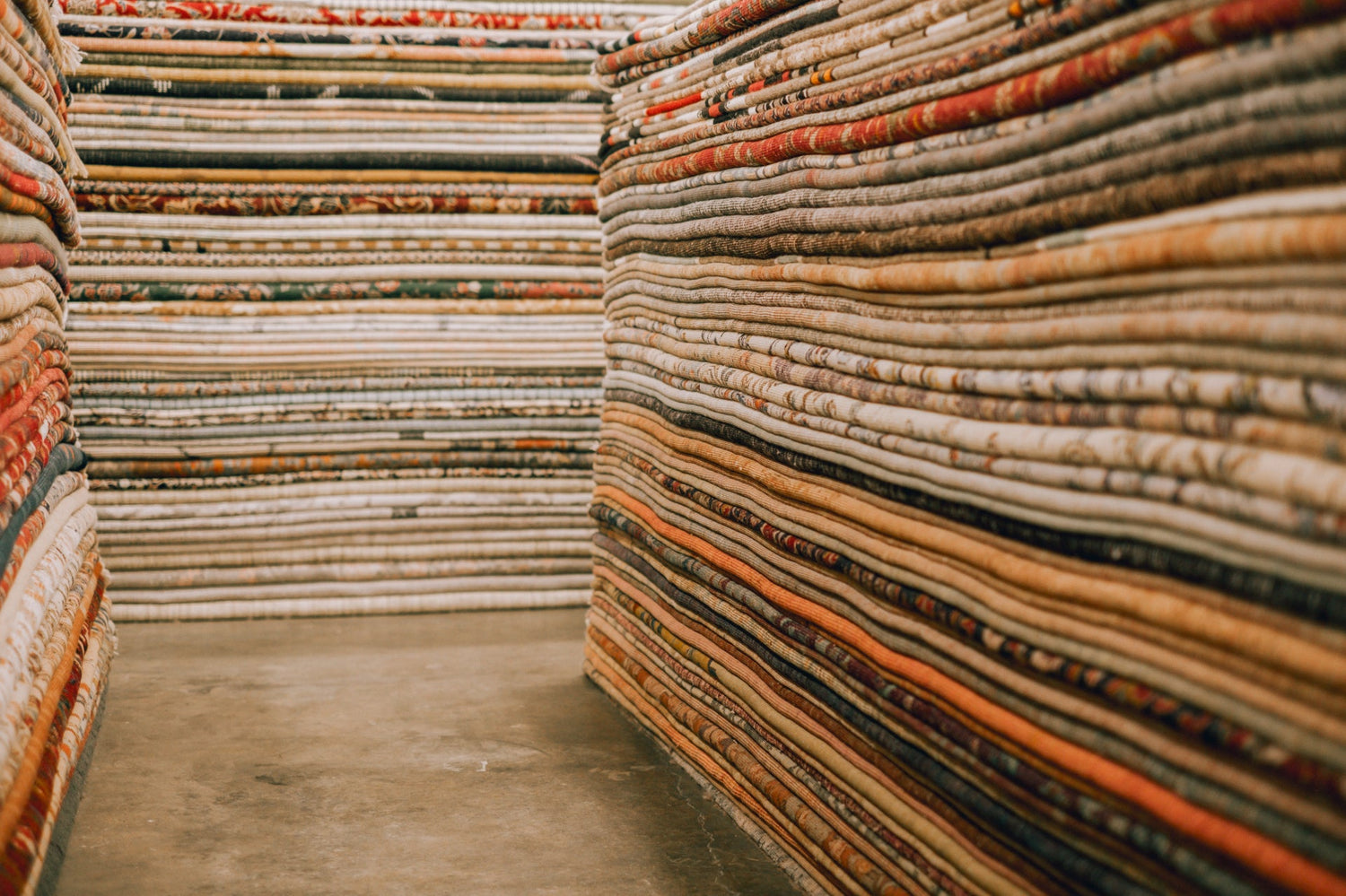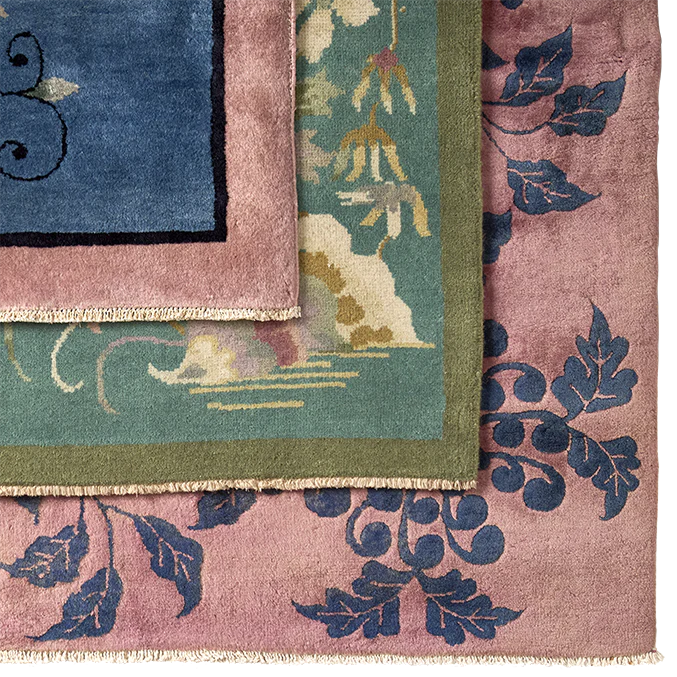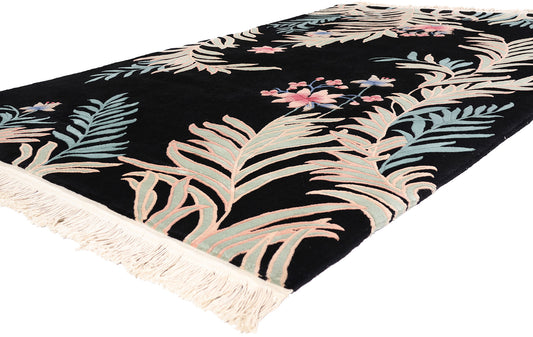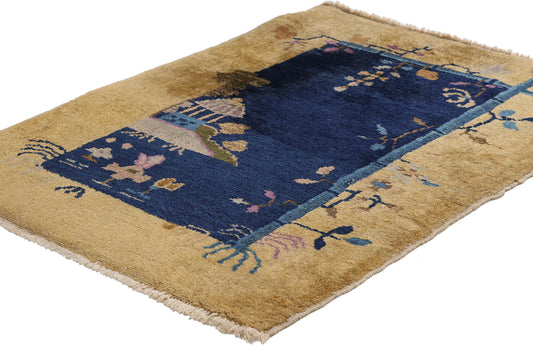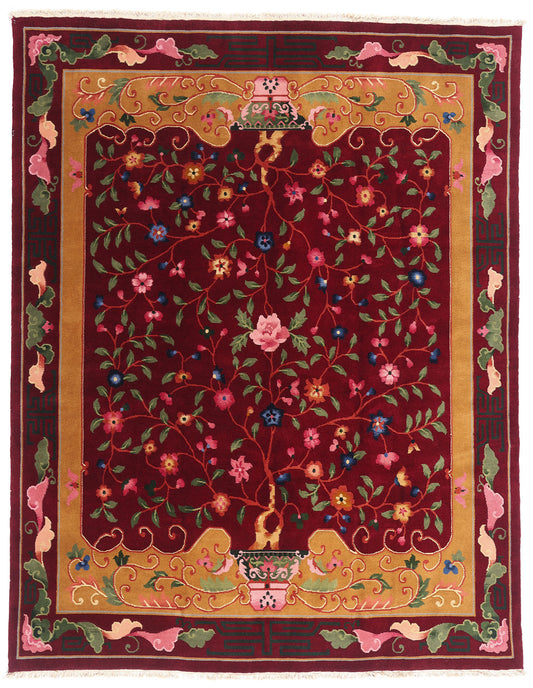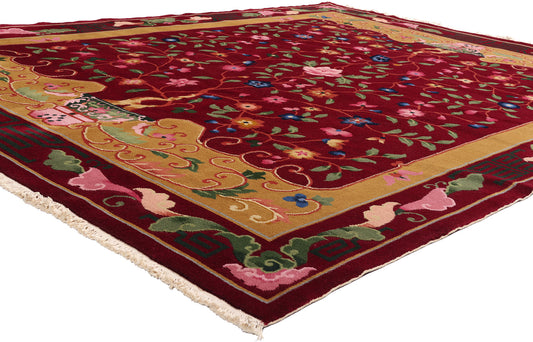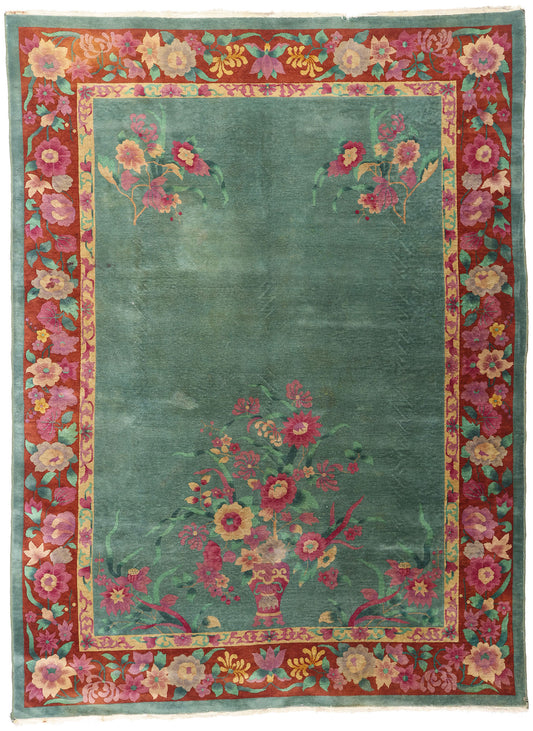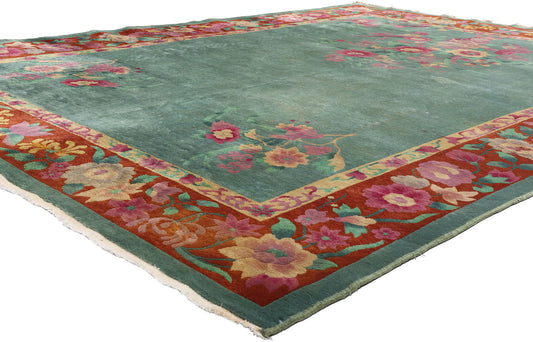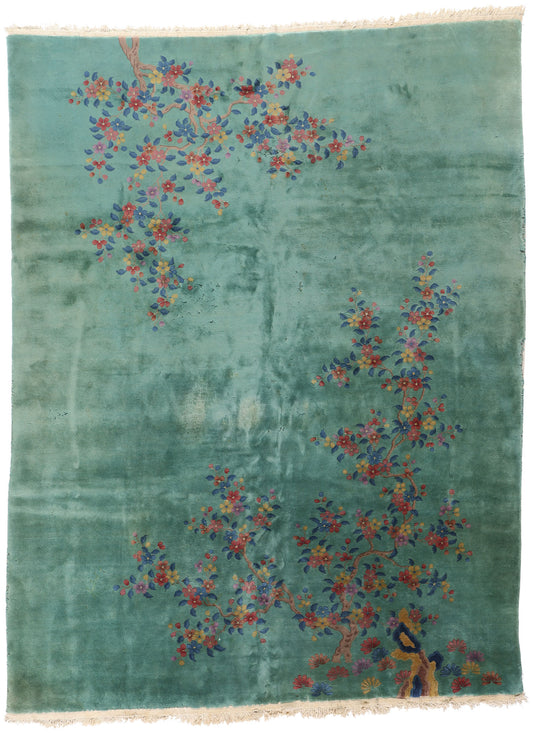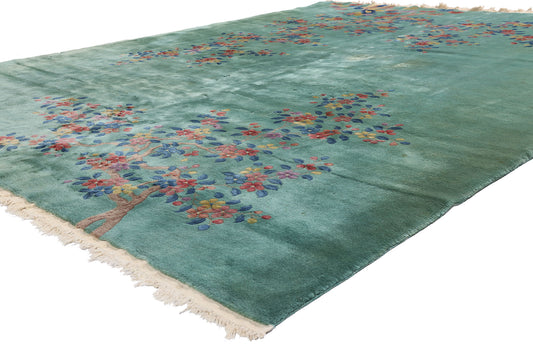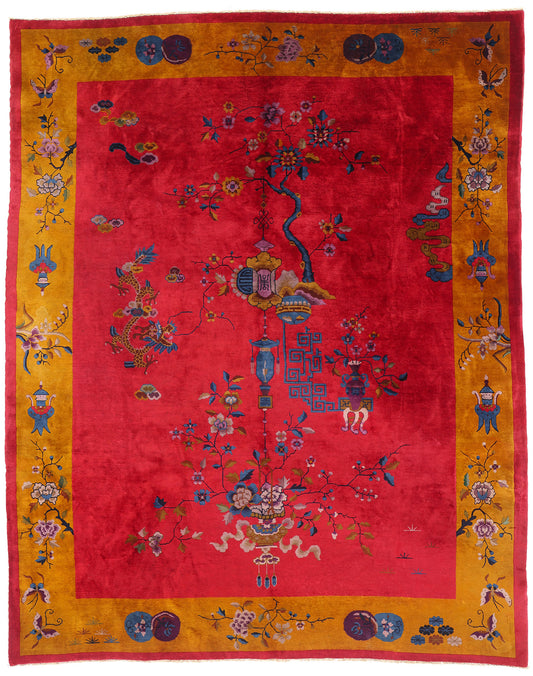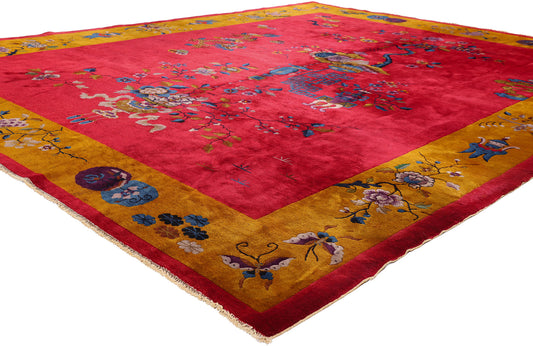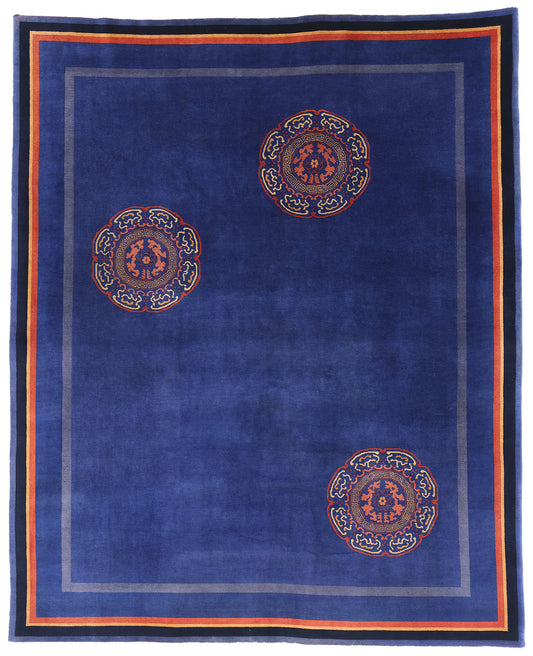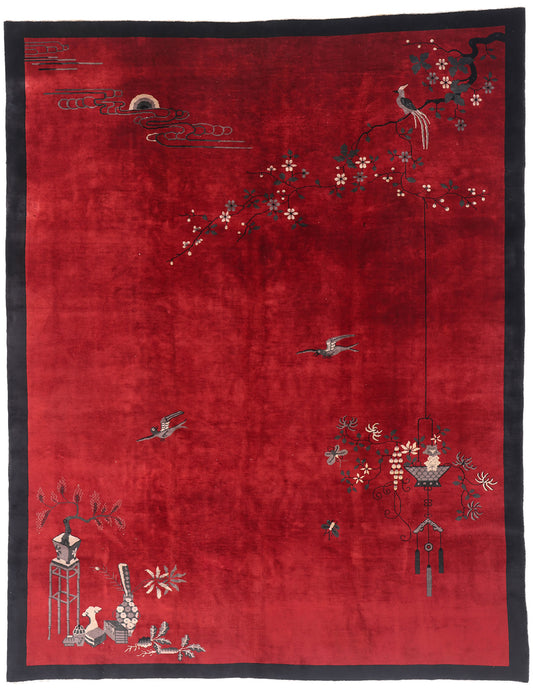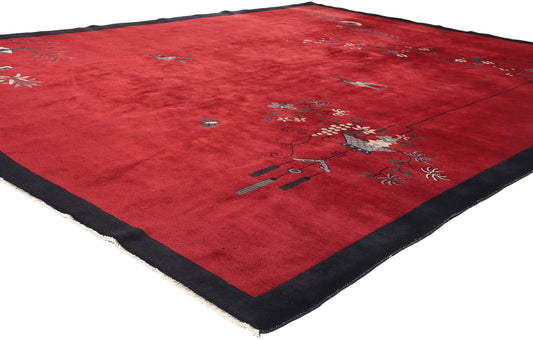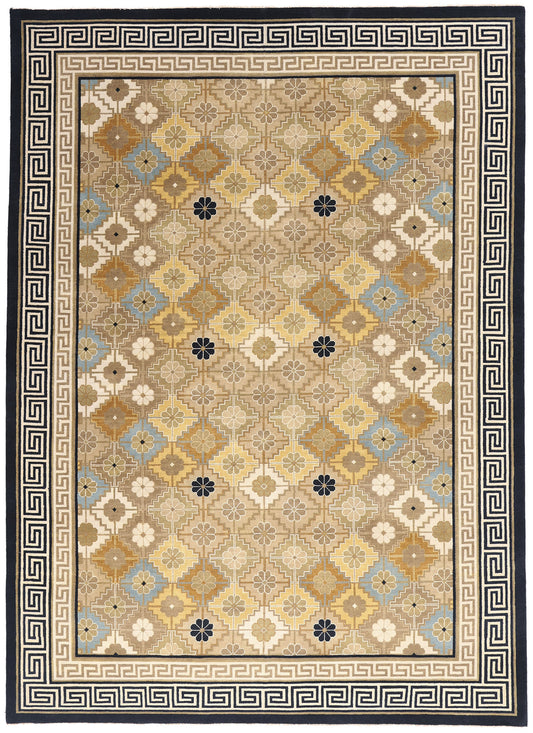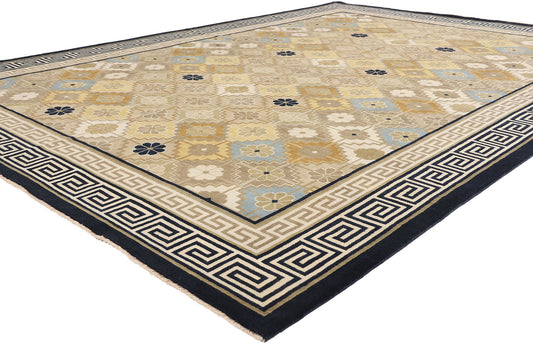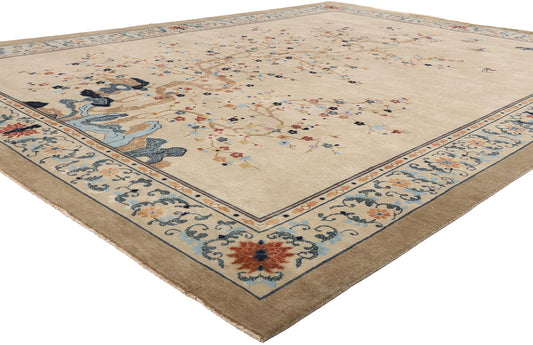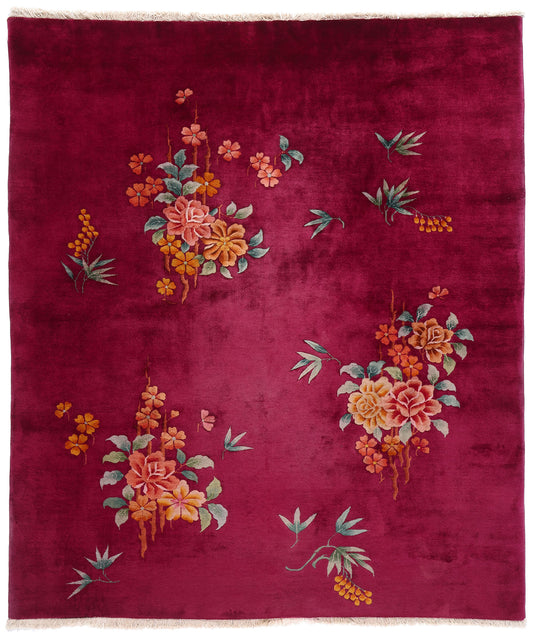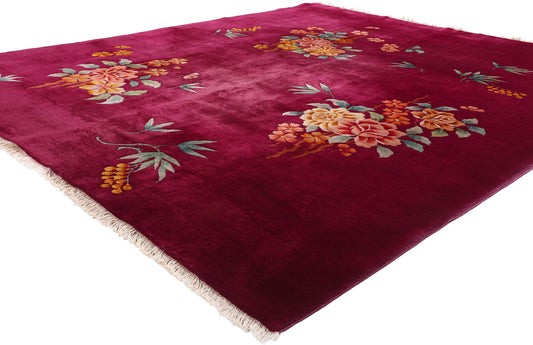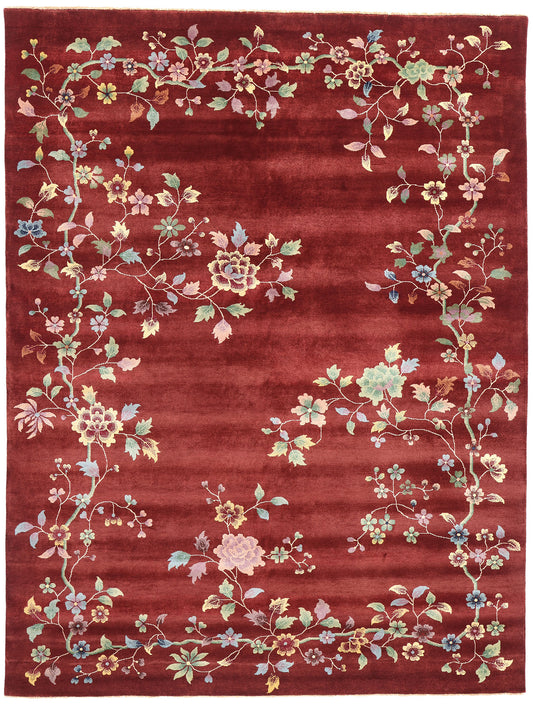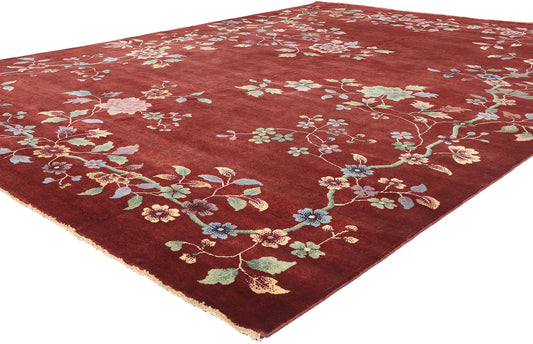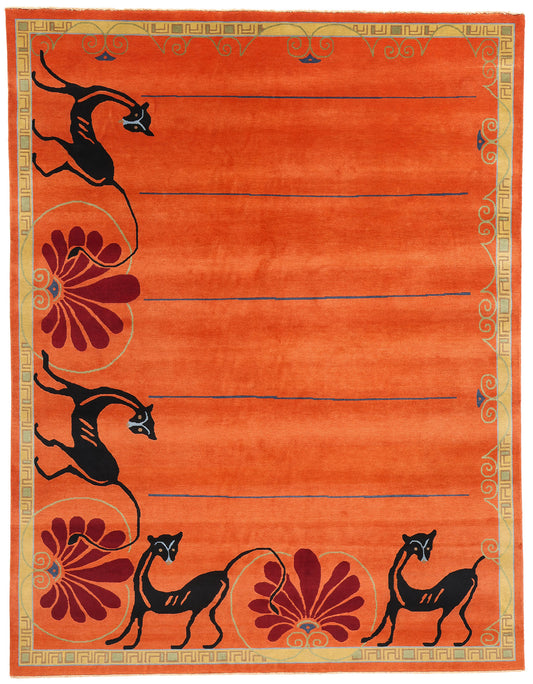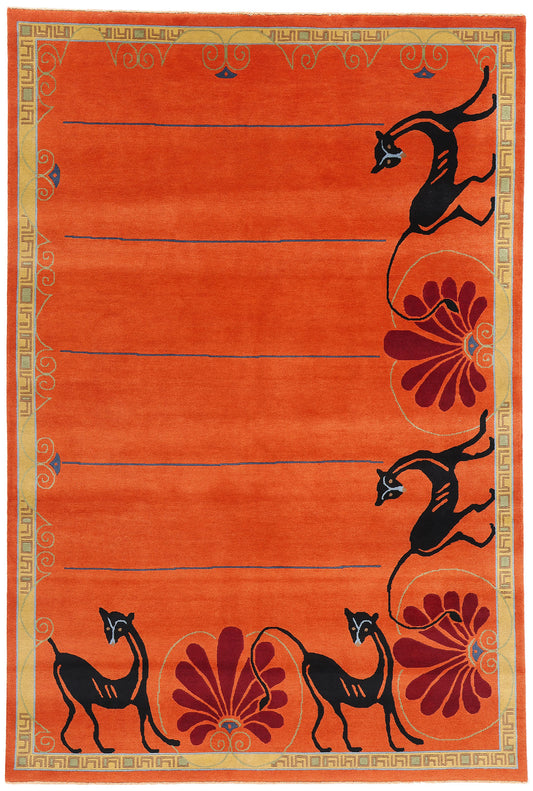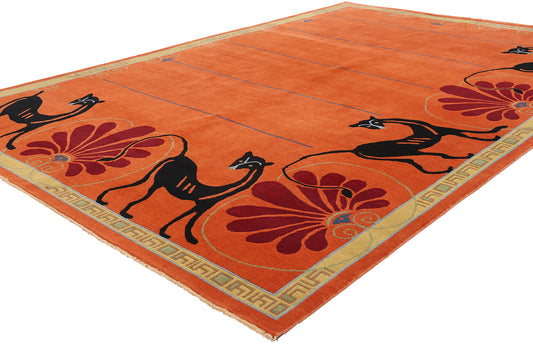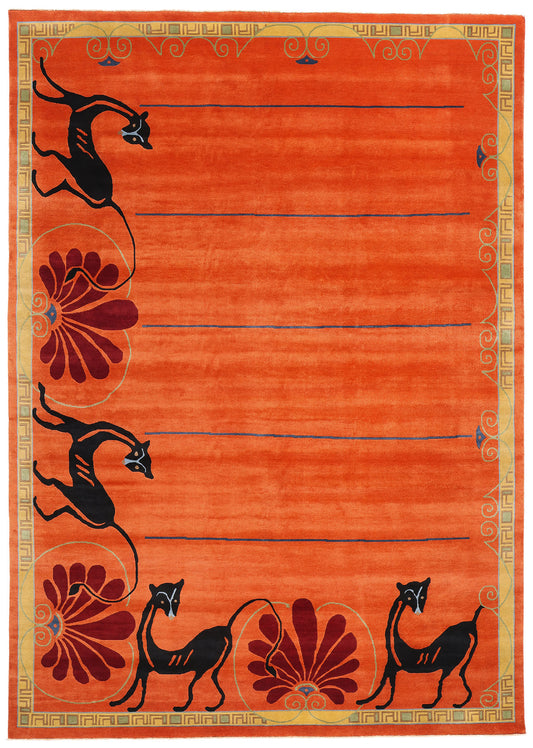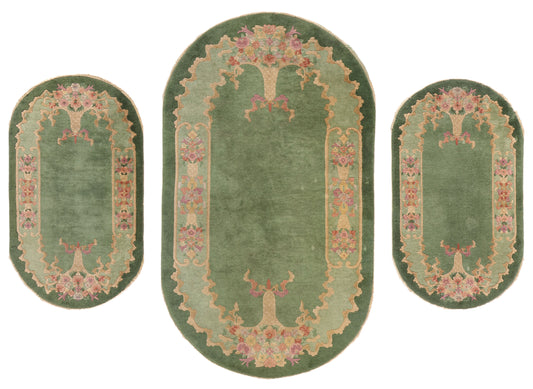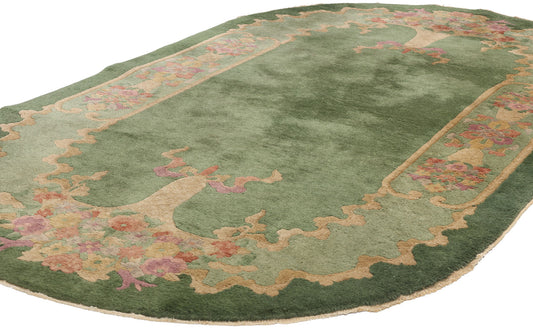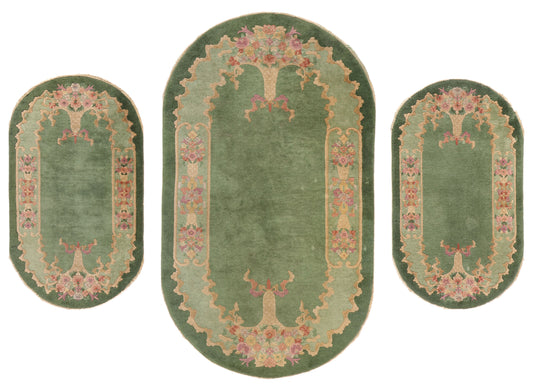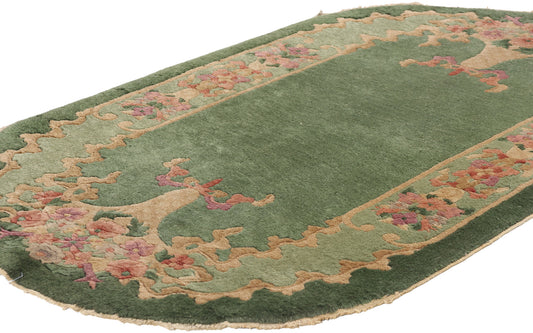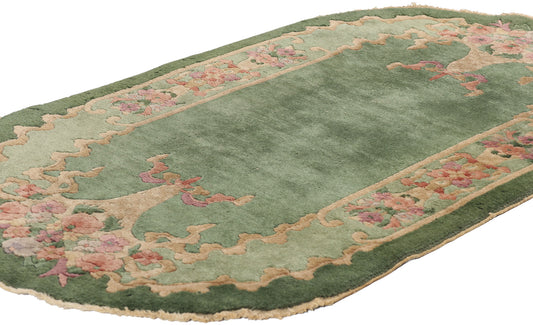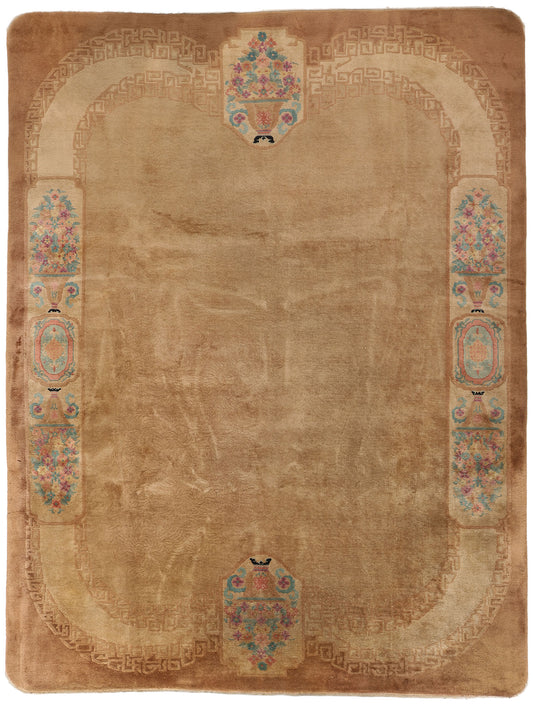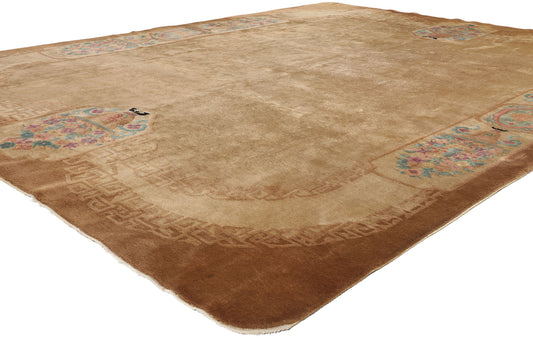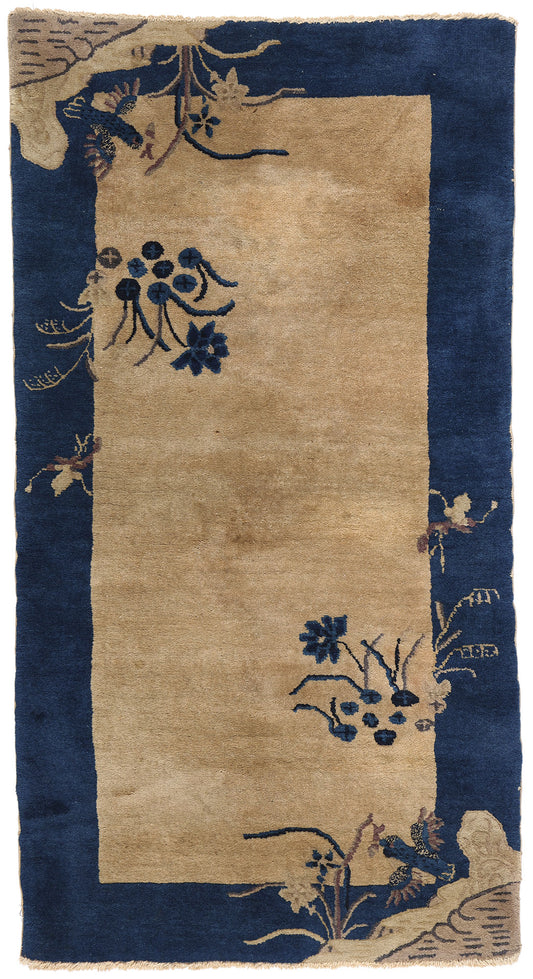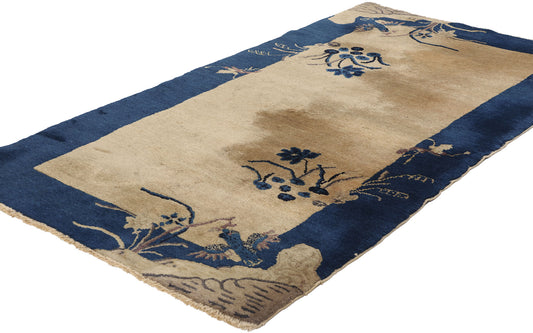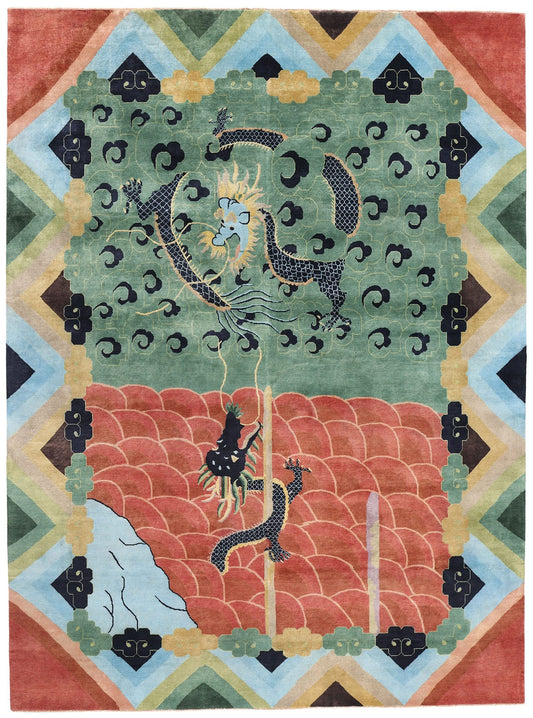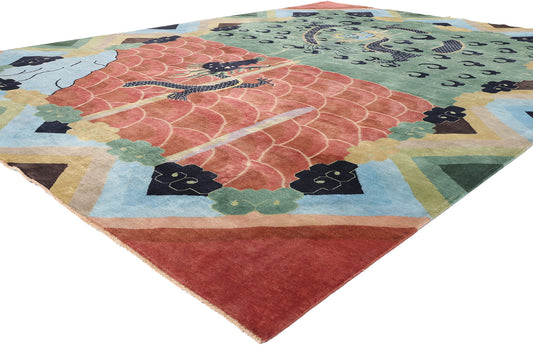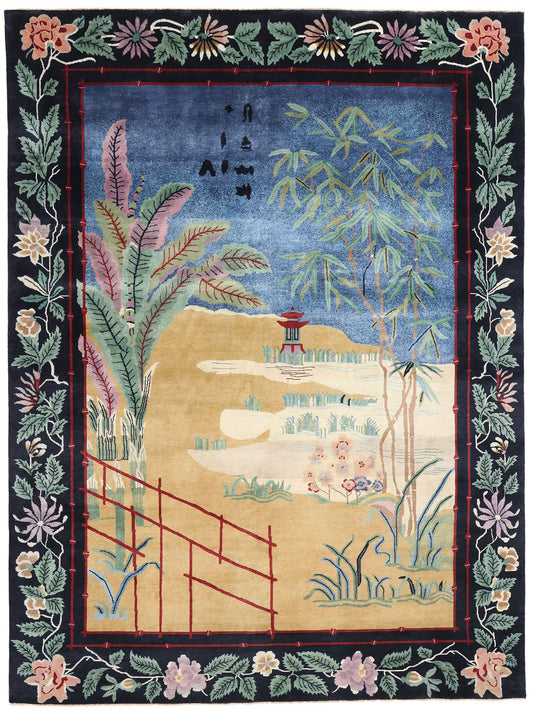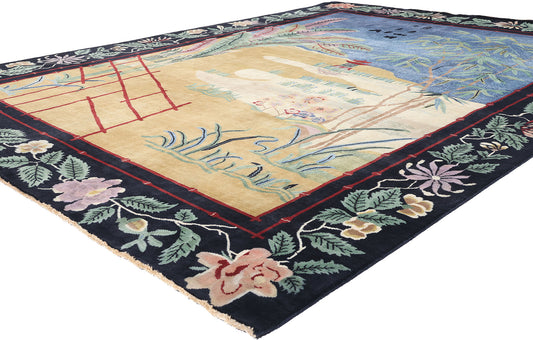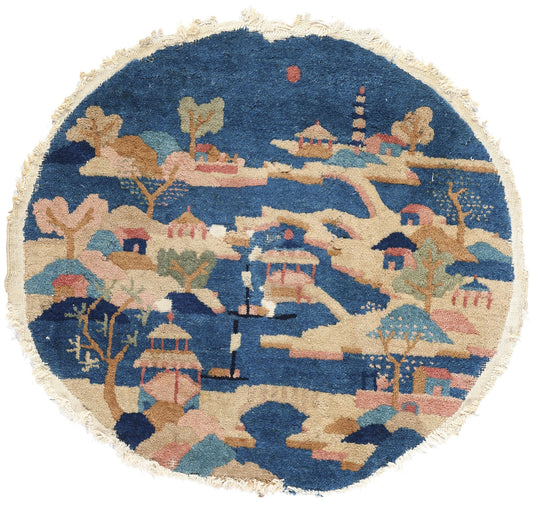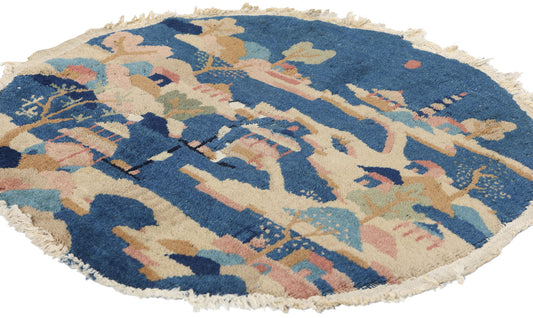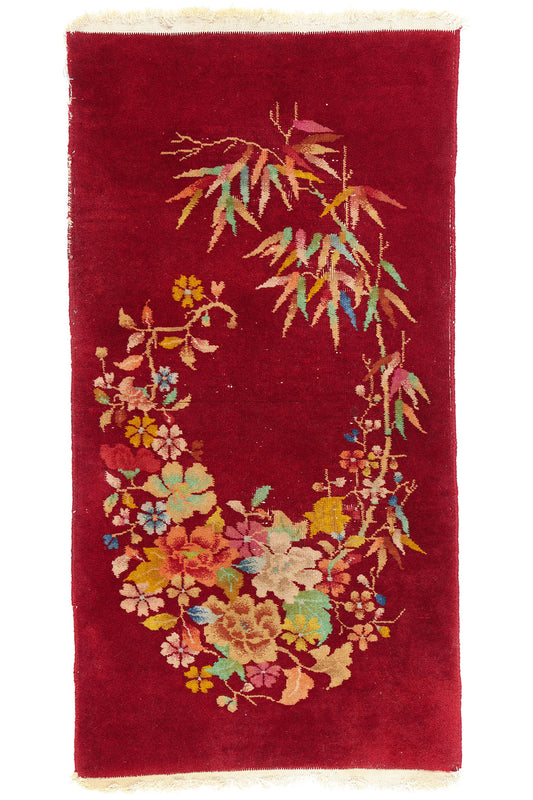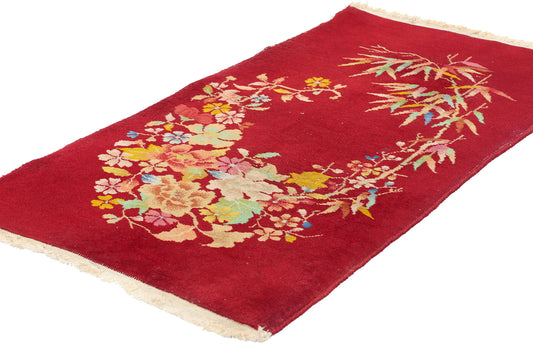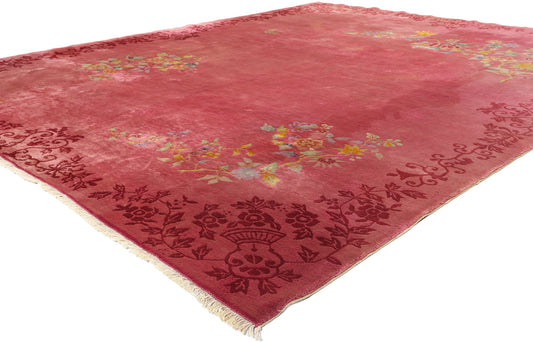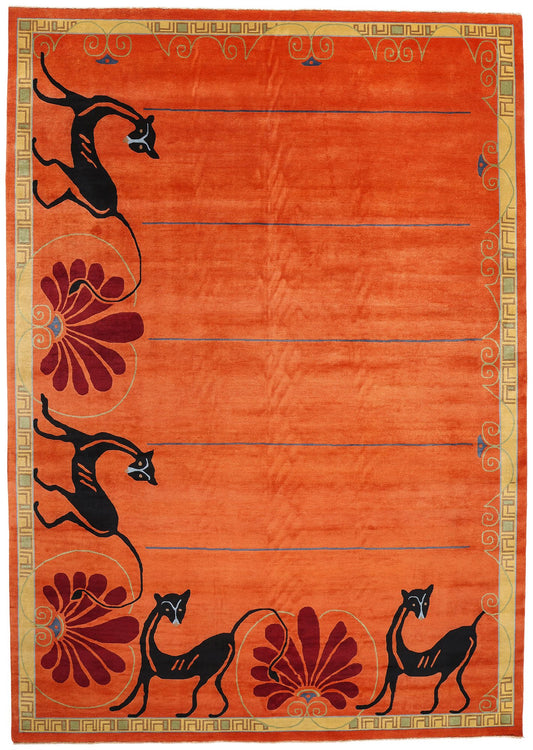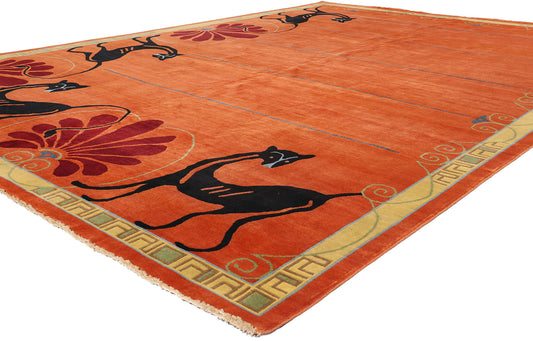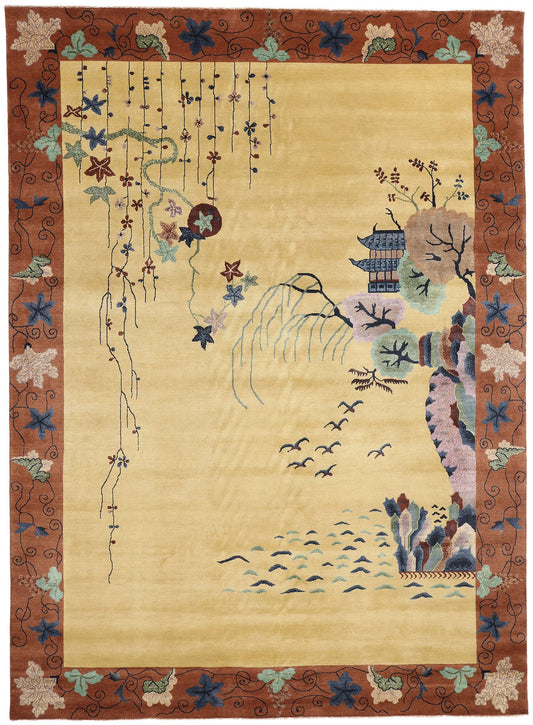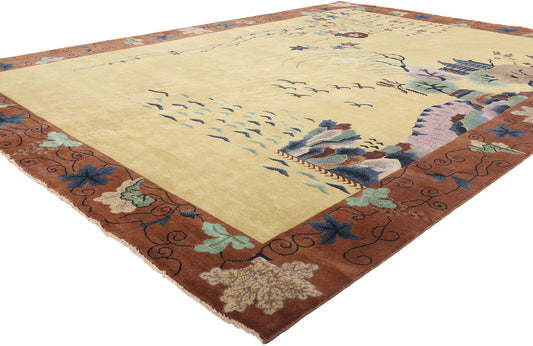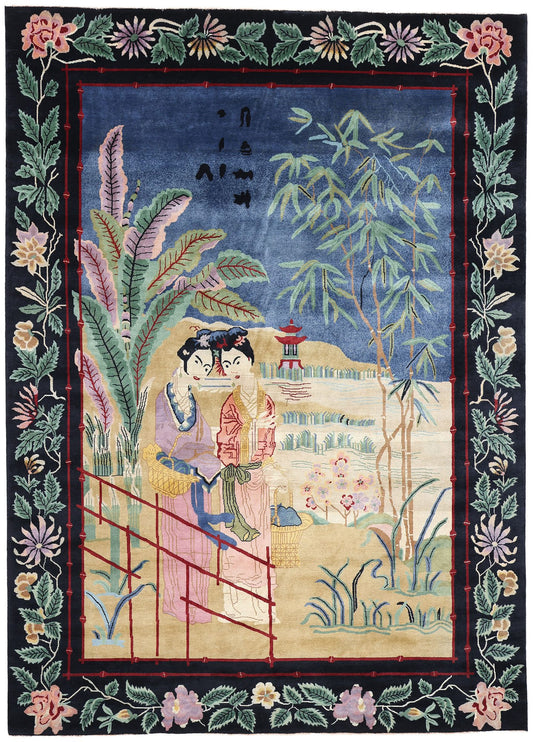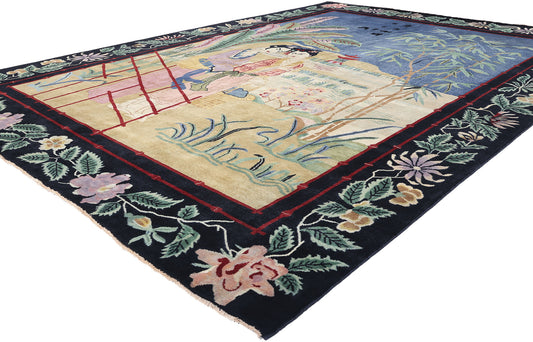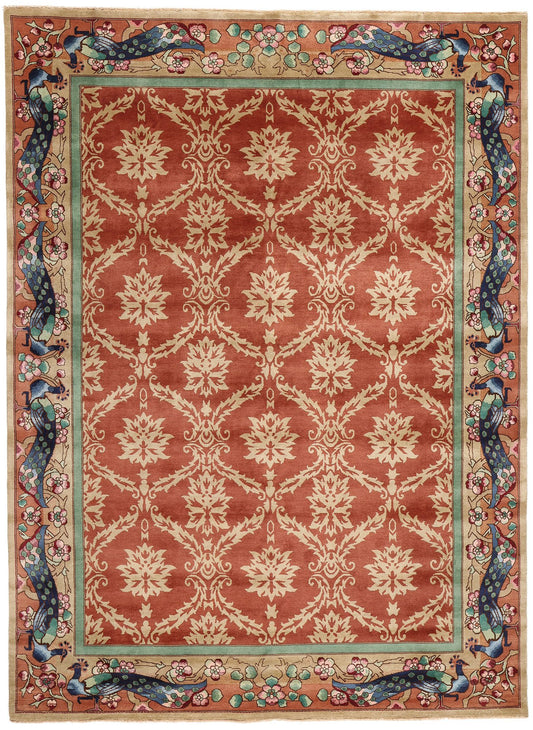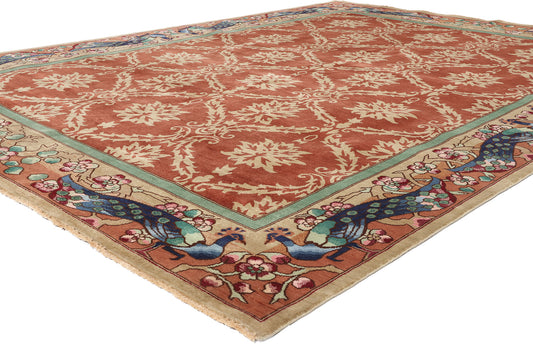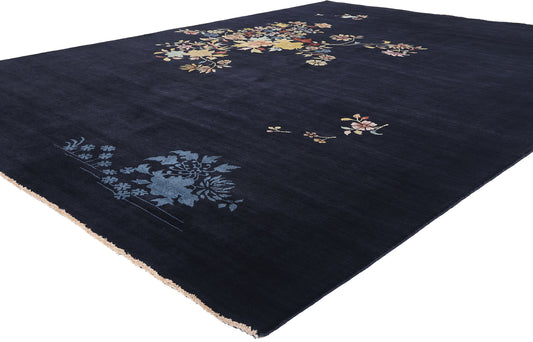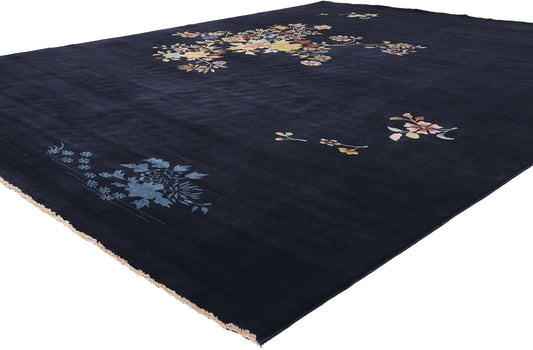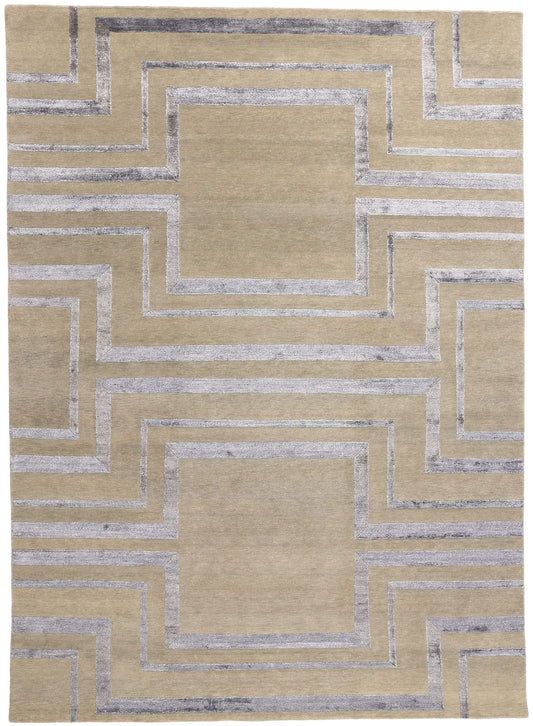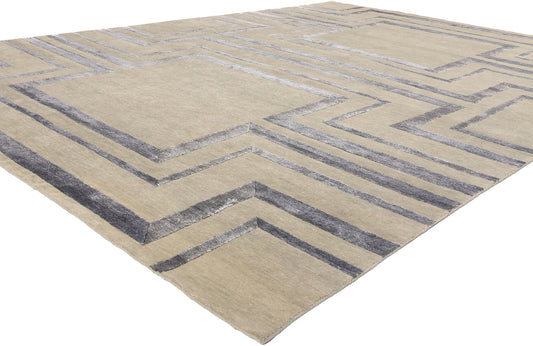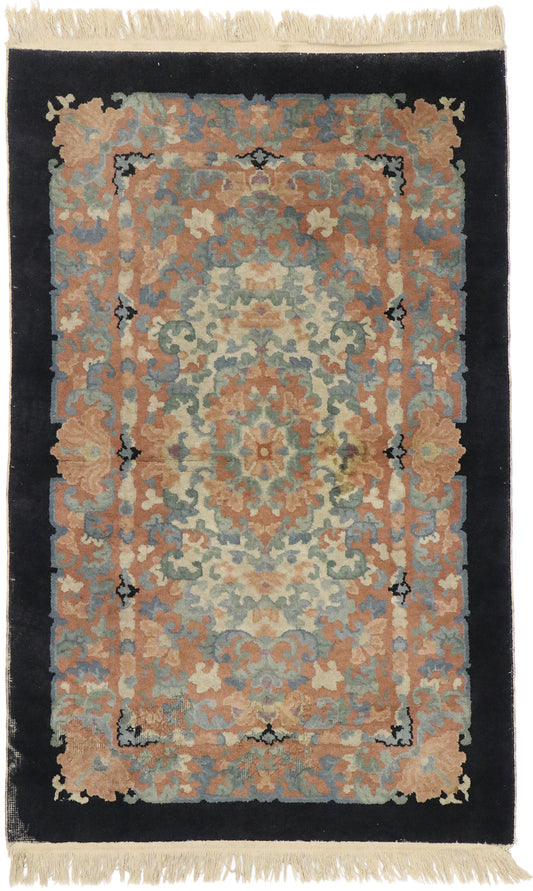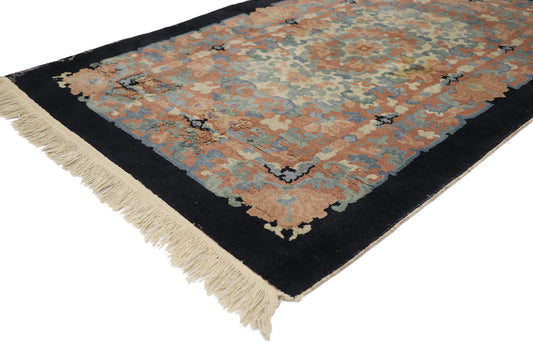The History of Chinese Art Deco Pieces
The production of the Chinese Art Deco rugs in our collection began in China during the 1920s, mainly in Tianjin and Beijing. However, Shanghai was the cultural hub where the East-meets-West style flourished, inspiring not just Chinese Art Deco carpets but also extending to fashion, architecture, and interior design. The blend of local Chinese traditions with Western modernism resulted in vibrant colors, exotic motifs, and bold geometric patterns that inescapably draw the eye.
The East-Meets-West Aesthetic in Shanghai
Shanghai’s architectural and cultural blend shaped the “Chinese Deco” style. Foreign and Chinese architects with international training were the primary influences that brought to life notable Art Deco buildings, such as the iconic Cathay Theatre, ensuring that this new style of design permeated every decorative element in residential and commercial spaces.
In the realm of rugs, Walter Nichols, an American, played a significant role. He manufactured Chinese Art Deco carpets in Tientsin, China, using the finest materials such as wool and silk. These rugs depicted exotic Asian flowers and birds in rich, bold colors, marking a departure from traditional Chinese rug designs.
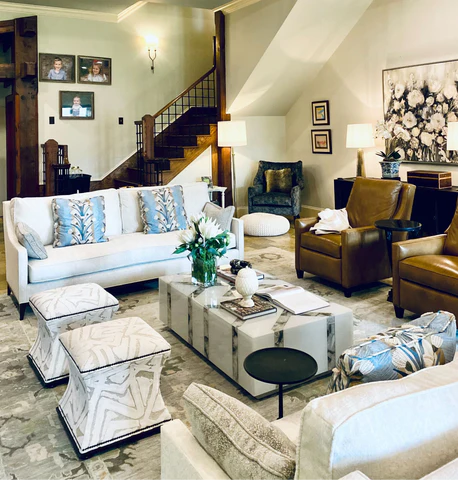
Chinese Art Deco Rugs: A Visual Delight
Chinese Art Deco carpets are a testament to the influence of a bold architectural movement, resulting in pieces that have striking visual appeal and captivating designs. These rugs are characterized by:
- Bold and Vibrant Colors: Chinese Art Deco pieces are known for their rich and vibrant color palettes, which include jewel-like hues such as magenta, turquoise, emerald, ruby red, and violet.
- Geometric Patterns: Unlike traditional Oriental rugs, Chinese Art Deco rugs for sale feature simpler, more geometric patterns. These designs often incorporate balanced asymmetry, reflecting the Art Deco movement’s emphasis on simplification and modernism.
- Exotic Motifs: These rugs frequently depict exotic Asian flowers, birds, and other motifs inspired by Asian culture. This infusion of Eastern symbolism adds an element of mystique and elegance to the rugs.
- Maximalist Appeal: Chinese 1920s rugs are a perfect fit for maximalist interior design. Their bold patterns and vibrant colors celebrate eclecticism and individualistic abundance.
- Historical Significance: Beyond their aesthetic appeal, Chinese Art Deco carpets carry historical significance that represents a unique period in the convergence of Eastern and Western design influences.
Esmaili Rugs: Where Timeless Artistry Meets Luxury
Esmaili Rugs offers an expertly curated collection of Chinese rugs for sale with authenticity and provenance. With over 30 years of experience in antique carpets and vintage rugs, our store features only the best pieces from around the world, including antique Oushak carpets, boho Moroccan rugs, Afghani carpets, and more. Shop with Esmaili Rugs for trusted guidance for collectors, designers, and discerning homeowners with a focus on timeless artistry paired with modern service.
Discover the Elegance of Chinese Rugs at Esmaili
Antique, vintage, and contemporary carpets from our collection offer so much more than a simple floor covering. These are masterful pieces of art that seamlessly blend history, culture, and style with a functional purpose, elevating and enhancing any space. Choose the elegance of Chinese Art Deco rugs at Esmaili Rugs, where history, artistry, and modern design converge.

